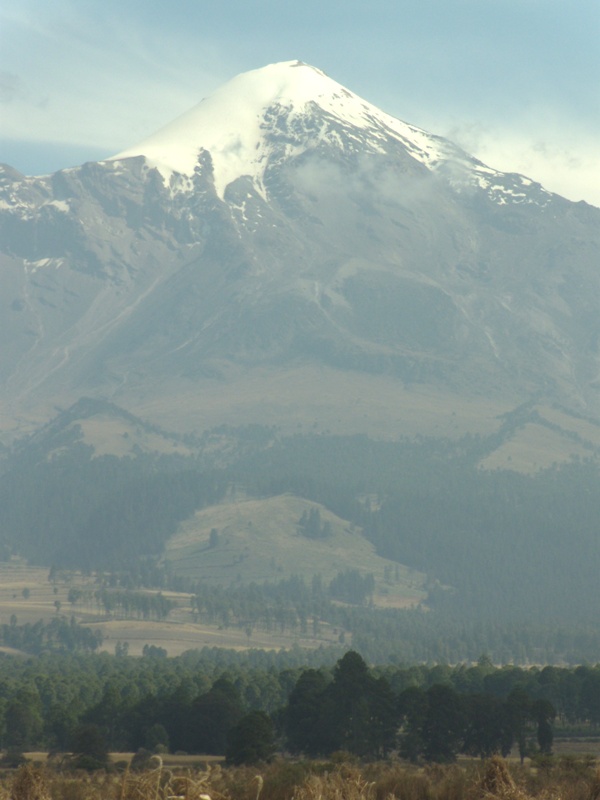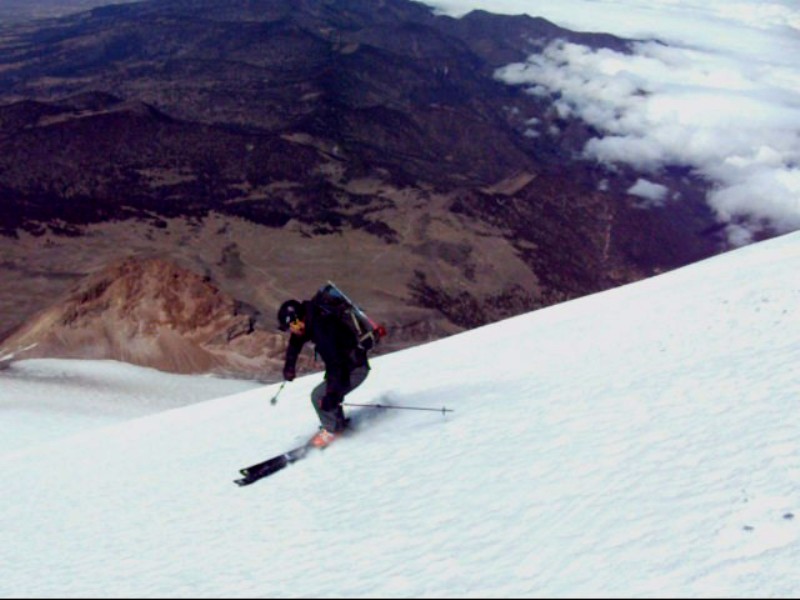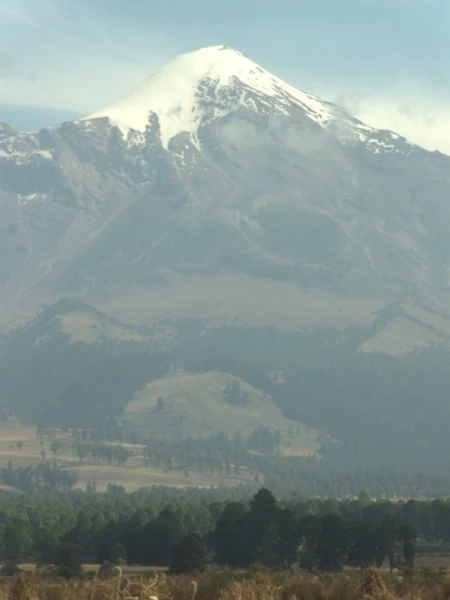Skiing Pico de Orizaba
Many of the crew here at Patagonia del norte (aka,  Not many people go to Mexico for the skiing, but that is exactly what we did on a month long rock-climbing and skiing road trip south of the border. The main objective for the trip was to climb and ski off the top of the 18,490 ft. volcano, Pico de Orizaba. Along the way we were able to stop and check out many of Mexico’s lesser known sport climbing areas. My partner on this adventure was Matt Castellon, who, like me, is a wildland firefighter just off of his first year as a McCall, Idaho, smoke jumper.
Not many people go to Mexico for the skiing, but that is exactly what we did on a month long rock-climbing and skiing road trip south of the border. The main objective for the trip was to climb and ski off the top of the 18,490 ft. volcano, Pico de Orizaba. Along the way we were able to stop and check out many of Mexico’s lesser known sport climbing areas. My partner on this adventure was Matt Castellon, who, like me, is a wildland firefighter just off of his first year as a McCall, Idaho, smoke jumper.
Pico de Orizaba is a dormant volcano located southwest of Mexico City and just 68 miles from the Gulf of Mexico. Orizaba, also known as Citlaltépetl by the Mexican people, is part of the Sierra Madre Oriental mountain range and reaches a height of 18,490 ft. (5,636 m), making it the third highest peak in North America. The first known ascent of the peak was completed by a group of Europeans during a botanical expedition on August 22, 1838. Members of this expedition included Henri Galeotti, Augusto B. Ghiesbreght, Jean-Jules Linden, and Nicolas Funck. This group ascended the peak by way of the Jamapa Glacier, which is on the north face, and is now known as the “normal route.”
[Pico de Orizaba. Photo: Ryan Lynch]
We arrived at the peak from the west through the small town of Tlachichuca which sits at 8,530 ft. The first day, we drove straight through town and continued up the dirt road that led to the Piedra Grande hut which was the starting point for our intended route up the Jamapa Glacier. We drove up to 12,000 ft. and hiked up the four wheel drive track to get in a bit of acclimatization. After walking back down to the truck, we drove back to Tlachichuca where we spent the night.
We had arrived in town on a Sunday and the start of an eight-day festival. The festival included food vendors and carnival rides for the kids and turned a sleepy town into one of much activity. One of the more unnerving aspects of the festival was the fireworks that were being shot off all day and night. The fireworks sounded exactly like gunshots, and after hearing about all violence and drug cartel activity in the country, this sound took a little getting used to. After spending the night in Tlachichuca, we drove up to the  When we both reached the bottom of the glacier, we took our skis off and collapsed on the snow. We sat back, basking in the afternoon sun and looking back up the glacier from where we had come. Because of the hard snow conditions, I could just barely make out our faint ski tracks. Looking up and knowing that we had come all that way and achieved our goal of skiing off the third highest peak in North America produced great satisfaction.
When we both reached the bottom of the glacier, we took our skis off and collapsed on the snow. We sat back, basking in the afternoon sun and looking back up the glacier from where we had come. Because of the hard snow conditions, I could just barely make out our faint ski tracks. Looking up and knowing that we had come all that way and achieved our goal of skiing off the third highest peak in North America produced great satisfaction.
After sitting there for a while and finishing the last of our food and water, we forced ourselves to get up and began the long dirt trail slog back to the hut. This involved much tripping and stumbling with our skis on our backs scrapping every rock they could find. Finally, we reached the hut and were warmly welcomed by the guided party who had taken a short hike that day. Soon enough, we packed the truck up and headed down to town for a well deserved Mexican dinner.
[Top, Matt Castellon nears the summit. Middle, preparing to start the ski descent. Bottom, finding an edge in the crust of a permanent snowfield is made all the more difficult by the altitude. Photos, Ryan Lynch]
